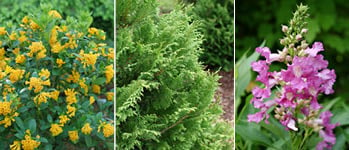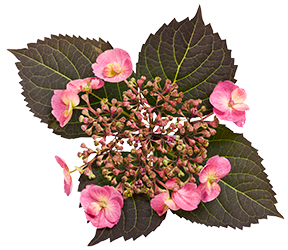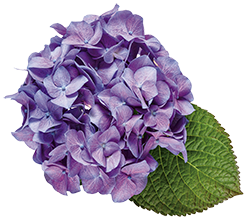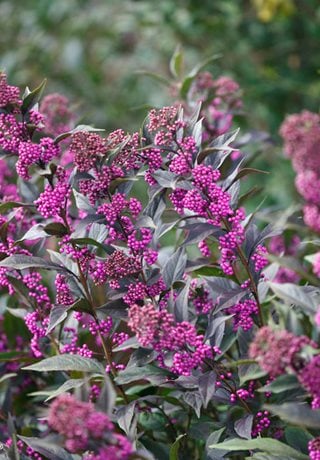How to Grow Butterfly Bushes Responsibly
Learn how to plant and care for non-invasive butterfly bushes in your garden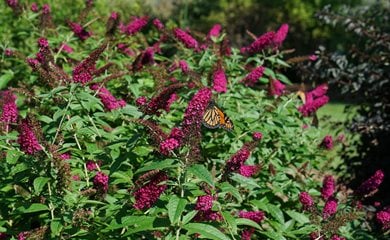
‘Miss Molly’ butterfly bush. Photo by: Proven Winners.
On this page:
To plant or not to plant has been the question surrounding butterfly bush (Buddleia or Buddleja davidii) for years. Its many blossoms, although irresistible to butterflies, can lead to aggressive re-seeding. Thankfully, breeders have been able to develop sterile or nearly-sterile cultivars, often referred to as summer lilac, and those are the ones we will focus on here.
- BUTTERFLY BUSH BASICS
- PLANTING BUTTERFLY BUSHES
- BUTTERFLY BUSH CARE
- PRUNING BUTTERFLY BUSH
- PICTURES
- DESIGN TIPS
- INVASIVE ISSUES
BUTTERFLY BUSH BASICS
Zones:
Most varieties zones 5-9, some to zone 10
Height/Spread:
Varies by cultivar; dwarf butterfly bushes can be as small as 18” tall and wide, while others can reach 7’ tall by 5’ wide.
Exposure:
Full sun
Bloom Time:
Generally, summer until first frost; some varieties start earlier in summer and some later.
Flower Color:
Varying shades of pink, purple, blue, orange, and white.
Other:
Attracts butterflies, bees and hummingbirds.
Is butterfly bush poisonous?
Butterfly bush is not known to be toxic to humans or animals, but not to be confused with butterfly weed which is toxic to both.
Is butterfly bush deer resistant?
Butterfly bush is a perfect choice for fending off deer in your garden, as it is not on their preferred menu.
PLANTING BUTTERFLY BUSHES
When to plant:
Butterfly bush is best planted in the spring or fall. If planting in fall, make sure to get them in the ground well before first frost in order to develop a good root system before colder temperatures set in.
Where to plant:
Plant in an area with well-drained soil and full sun exposure. Plants will tend to get sparse and have decreased flowering if they don’t get enough sunlight. The flower color may also be lighter if planted in shade.
How to plant:
Dig a hole twice as wide as the container and mix the surrounding soil with compost. The rootball should be level with the surrounding surface. Water thoroughly after planting and regularly through the first growing season. New transplants may take up to six weeks to settle in and get their roots established.
Additional plants to support the life cycle of butterflies:
While the honey-scented blooms of the butterfly bush provide nectar for butterflies, it is not a suitable host or food plant for butterfly caterpillars.
According to Butterfly Gardener, a publication of the North American Butterfly Association, common food sources for caterpillars include trees, shrubs and herbaceous perennials such as:
- Black cherry
- Tulip poplar
- Northern spicebush
- Blueberries
- Gray dogwood
- Ninebark
- Hoptree
- Pipevine
- American or Maryland senna
- Blue wild indigo
- Violets
- Milkweeds
- Asters
Food plants such as these should be included in butterfly gardens to support the entire life cycle of your local butterfly population.
For more plants to include, see 25 Butterfly Garden Plants.
BUTTERFLY BUSH CARE
Soil:
Grow in average, well-drained soil; does poorly in wet conditions. For best flower color, soil should be slightly acidic to neutral with a pH of 6.0 to 7.5.
Amendments & Fertilizer:
Apply a controlled-release fertilizer or thin layer of compost in the spring. Over-fertilizing can promote an increase in foliage growth at the expense of flower production. In colder climates, a good layer of mulch in winter can help protect the roots.
Watering:
Regular watering during the first growing season is essential to establish a good root system. Once established, plants require only occasional watering and are drought tolerant, although regular watering may be required in extreme heat.
Diseases and Pests:
There are no serious disease or pest problems that affect these varieties of butterfly bush. Avoid the use of pesticides so that you don’t harm the many pollinators that visit them.
PRUNING BUTTERFLY BUSH
When to prune butterfly bush:
In mild climates, prune larger varieties in late fall or early spring to clean up and maintain shape. In cold climates, treat as perennials, cutting back close to the ground in late winter or early spring.
- Flower spikes form on new wood, so watch for new growth if pruning in spring.
- Deadheading may encourage re-blooming, but is not needed to prevent re-seeding in these sterile varieties.
- Smaller varieties may not require any pruning at all.
BUTTERFLY BUSH PICTURES
DESIGNING WITH BUTTERFLY BUSH
Here are some great ways to use butterfly bush in your garden:
- Plant among spring and early-summer bloomers to keep a constant stream of color going into fall.
- Use larger types in the back of a layered planting, more compact types in the middle, and lower spreading varieties as ground cover or to form a low border.
- Dwarf varieties add a splash of color and activity to a mixed container planting.
- Choose a site near patios or gathering areas to enjoy the butterflies and hummingbirds.
- Perfect for perennial beds and borders.
See more ideas on creating a butterfly garden.
Alternatives and companions:
If you are still wary of planting even the sterile species in your garden, or would like a variety of nectar plants, some common alternatives or additions include:
- Joe Pye weed
- New York ironweed
- Coneflowers
- Goldenrods
- Asters
- Lantana
- Agastache
INVASIVE ISSUES
Where is butterfly bush considered invasive?
Butterfly bush has been declared invasive in many regions including much of the Pacific Northwest, parts of coastal California and along the eastern seaboard. There are regions where the threat of invasive spreading is lower due to climate or availability, but some gardeners still choose to steer clear. See more, at InvasivePlantAtlas.org.
What can I do?
If you live in one of the invasive areas and already grow butterfly bush, your best course of action is to dig up your plant and replace it with one of the sterile types shown above. However, there is still a possibility that the sterile varieties (which are only about 98% sterile) can cross pollinate with an invasive non-sterile variety growing nearby.
Can the spread of butterfly bush be controlled?
If you live in an area where Buddleia davidii isn’t a problem, it may just be a matter of time before it becomes an invasive plant there too. However, if you deadhead butterfly bush meticulously before it goes to seed you may be able to halt the spread.
Are there any native butterfly bushes?
Buddleia davidii orginates from China, but you can try these native plants as options:
- Orange Woolly Butterfly Bush (Buddleia marrubifolia), native to the Chihuahuan Desert
- Rio Grande Butterfly Bush (Buddleia sessiliflora), native to Arizona and Texas
- Utah Butterfly Bush (Buddleia utahensis), native to Arizona, California, Nevada, and Utah
- Wand Butterfly Bush (Buddleia racemosa), native to Texas
- Escobilla Butterfly Bush (Buddleia scordioides), native to Arizona, New Mexico and Texas
Last updated: June 19, 2020
RELATED:
Butterfly Garden Plants
24 Plants That Attract Hummingbirds
Deer-Resistant Plants
20 Fragrant Flowering Plants
